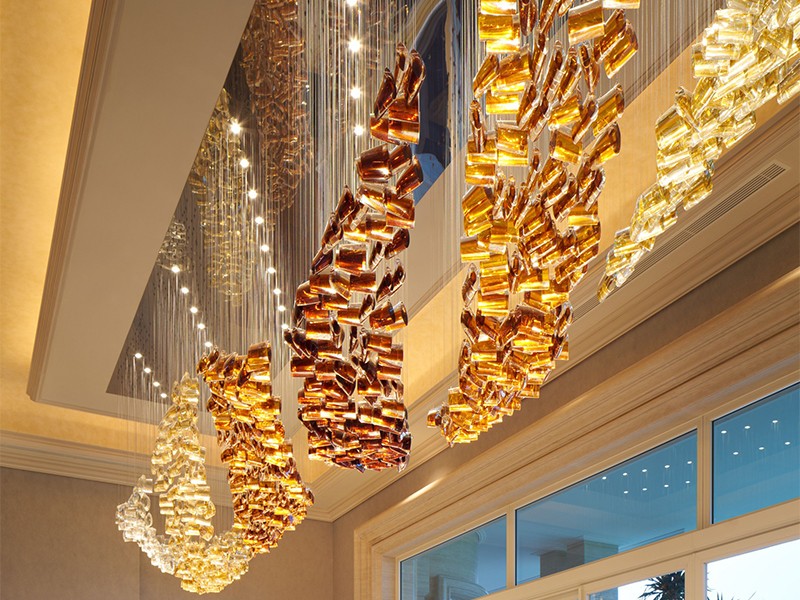G-Lights Designer'S Professional Advice on Light And Design
In project lighting, light is not only a tool to provide a bright environment, but also a key element to shape the atmosphere of the space and highlight the design focus. G-lights Lighting Factory, with its rich design experience and professional technical capabilities, has provided customers with many successful lighting design cases.
1. Clarify lighting goals: balance between functionality and artistry
Functional lighting: ensure that the basic lighting needs of the space are met, such as the brightness of the work area, the lighting of the safe passage, etc.
Artistic lighting: highlight key areas through lighting design, such as decorative walls, art display areas, etc.
Creating an atmosphere: using the color temperature, brightness and direction of the light to create a comfortable space atmosphere.
2. Choose the right lamps: match the space needs
Chandeliers and ceiling lamps: suitable for areas that require overall lighting, such as halls and restaurants.
Downlights and spotlights: suitable for key lighting, such as display areas, art displays, etc.
Wall lamps and floor lamps: suitable for auxiliary lighting, such as corridors, stairs, etc.
Smart lamps: suitable for places that require dynamic adjustment, such as conference rooms, multi-function halls, etc.

3. Reasonable planning of lighting layout: coexistence of layering and uniformity
Layered lighting: Divide lighting into basic lighting, key lighting and decorative lighting to form a sense of layering.
Uniform distribution: Avoid light spots and shadows to ensure uniform distribution of light.
Dynamic adjustment: Through the intelligent control system, dynamic adjustment of lighting and scene switching are achieved.
4. Clever use of lighting color temperature: create a spatial atmosphere
Warm light (2700K-3000K): suitable for places such as residences and hotels that require a warm atmosphere.
Neutral light (4000K-4500K): suitable for places such as offices and shopping malls that need to be bright but not too glaring.
Cold light (5000K-6500K): suitable for places such as hospitals and warehouses that require high concentration.
Case analysis: In the lighting design of an art exhibition hall, G-lights designers used neutral light (4000K) as the main light source to ensure the true color presentation of the exhibits, while using warm light (3000K) to highlight the sculptures and enhance the appreciation of the artworks.
5. Focus on glare control: improve visual comfort
Choose appropriate optical design of lamps: such as anti-glare lampshades, deep reflectors, etc.
Reasonably adjust the installation angle of lamps: avoid direct light to the human eye.
Use indirect lighting: reflect light through walls and ceilings to reduce direct glare.
6. Application of intelligent lighting: achieve flexible control
Timing control: automatically adjust light brightness and color temperature according to time.
Scene mode: preset lighting effects for different scenes, such as meeting mode, rest mode, etc.
Remote control: remote control through mobile phone APP or voice assistant.
7. Environmental protection and sustainability: the future of green lighting
Choose efficient lamps: use efficient light sources such as LED to reduce energy consumption.
Optimize lighting design: reduce unnecessary energy consumption through intelligent control.
Use environmentally friendly materials: choose recyclable and low-pollution lamp materials.
Lighting design is an important part of space design. It not only affects the functionality of the space, but also shapes the atmosphere and beauty of the space. G-lights designers have provided customers with many successful lighting design solutions through their professional technology and experience. Whether it is a functional office space or an artistic exhibition hall, G-lights can bring customers the best lighting effects through reasonable lighting selection and layout. In the future, G-lights will continue to be driven by innovation, use the art of light and design to illuminate every space, and add more possibilities to the user's visual experience.



